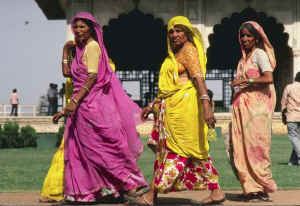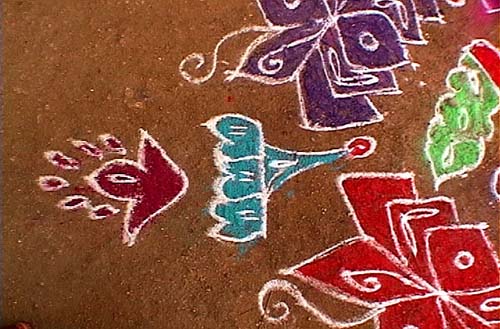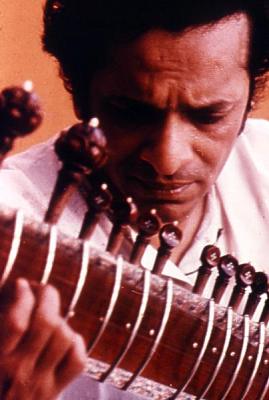
|

|

|

|

|

|

|

|
Foods of India
Indian food is as varied as anything else in that country; there is no easy definition of an
"Indian meal". Indian food is often thought of as very spicy, but there are some simple breads,
sweet deserts, and milder 'one-pot dishes' that defy the norm.
Many Indians are vegetarian, but then,
some are not. There are regional specialities, different ways to serve the meal, and staple
ingredients in each state. This combines to create a diverse cuisine that never becomes boring.
Regional Food
Snacks and Drinks
Recipes: All kinds of Indian food to try!


Eating Styles:
| Indian food is often eaten with the hands, however, this custom is
guided by some basic rules. For instance, it is considered impolite to allow the food to pass the first joint of the fingers. The fingers should
never touch the mouth directly. In addition, only the right hand may be used in eating.
Since most Indian meals include a kind of flatbread, that is traditionally used to scoop or roll vegetables or rice. A spoon is provided for soup, but the bread may even be used to eat that! Meat, if served, may be eaten with a knife and fork, but it will more often be served pre-cut, so it may be easily managed by the fingers. Indians usually eat their largest meal at midday, prefering to end with a light evening meal. People either bring their midday meal to work or use a lunchpacking service called "tiffin" that delivers traditional hot meals to their workplace. If possible, many Indians like to come home for the midday meal. |

Regional Food:

Click on an area of the map above for information about the food of that region.

Snacks and Drinks:
| Snack Food:
Indian snacks may be salty, spicy, or sweet. Street vendors sell many different kinds, including warm dishes. Sometimes, they are substantial enough to serve as a light meal! The "pav bhaji" is a patty made of mixed vegetables that have been mashed and shallow fried and then served on a slice of bread. Another popular snack throughout the country is "bhel", a mixture of puffed rice, crunchy chickpea flour chips, onions, tomato, green peppers, and tamarind chutney. "Pani puri" are small, hollow breads stuffed with a bit of potato, onion, or chickpea and topped with a "pani" of seasoned water. Nuts are another common choice, but they are roasted with a hot spice blend of turmeric, paparika, and cumin powder. Often a little lemon juice is squeezed on top. |
| Drinks:
The most common drink in India is tea. This is prepared with milk, sugar, and a blend of ginger,nutmeg, cinnamon, cloves, and cardamom. Most people will drink this tea, called "chai" with breakfast and in the late afternoon. In fact, it may be served at any time and is a popular refreshment for guests. An example of a common cold Indian drink is "lassi", which is a yoghurt or buttermilk drink that is sweetened and flavored with rose, mango, or served plain. |


To top of page